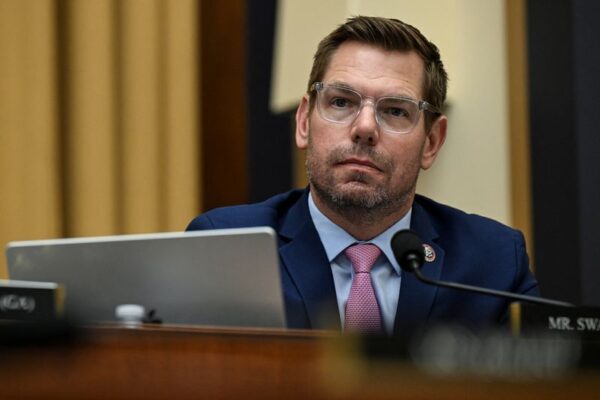Alberto Musalem to succeed Bullard as St. Louis Fed president
By Michael S. Derby
NEW YORK (Reuters) -Alberto Musalem, an economist and former New York Federal Reserve staffer, has been tapped to become the new president of the St. Louis Fed, the regional bank said on Thursday.
Musalem, 55, succeeds James Bullard, who led the St. Louis Fed from 2008 until his unexpected resignation last July, when he announced he was leaving to become the dean of Purdue University’s business school.
Kathleen O’Neill, the St. Louis Fed’s first vice president, will continue to serve as its interim leader until Musalem starts his new role on April 2.
Musalem will bring extensive market, public policy and central bank experience to the St. Louis Fed.
He recently served as co-chief investment officer and co-founder of Evince Asset Management and was also an executive vice president at the New York Fed between 2014 and 2017, focusing on the financial sector and broader policy issues. He also was a partner and managing director at Tudor Investment Corporation and worked as an economist at the International Monetary Fund.
Musalem is currently an adjunct professor at Georgetown University. He also serves on the boards of the Federal Home Loan Mortgage Corporation and Man Group, roles the St. Louis Fed said he will give up.
He has a PhD in economics from the University of Pennsylvania and holds master’s and bachelor’s degrees in economics from the London School of Economics and Political Science. Born in Bogota, Colombia, Musalem is a U.S. citizen.
“As an experienced economist, former Federal Reserve leader, collaborator and communicator, he comes with the exceptional technical expertise and leadership abilities needed to contribute to effective policymaking and advance a large organization in service to the public,” St. Louis Fed Director Carolyn Chism Hardy said in a press release. Hardy, who is president and CEO of Chism Hardy Investments, LLC, helmed the regional bank’s presidential search committee.
INTO THE FIRE
The incoming St. Louis Fed chief has big shoes to fill. Bullard was an active voice on monetary policy and economic issues, and at points his comments were among the most market-moving of all U.S. central bank officials. Musalem will begin his first voting role on the rate-setting Federal Open Market Committee next year.
In his final stretch at the St. Louis Fed, Bullard was an early supporter of dialing back on the central bank’s pandemic-era stimulus after amid a surge in inflation, a path the central bank eventually embraced in an aggressive fashion.
Musalem will arrive as the Fed has almost certainly ended its rate hiking campaign following a sizable moderation in inflation pressures. While financial markets are already betting on Fed rate cuts this year, policymakers are eyeing what they see as an uncertain outlook and are still debating how long they’ll need to keep the central bank’s benchmark overnight interest rate in the current 5.25%-5.50% range to ensure inflation returns to the 2% target.
Fed officials also are contemplating the ongoing drawdown of the central bank’s $7.764 trillion balance sheet. The Fed is allowing nearly $100 billion in Treasury bonds and mortgage-backed securities that it holds to expire each month and has shaved more than $1 trillion from its holdings since they peaked at nearly $9 trillion in 2022.
With rate hikes likely done and liquidity being drained from the financial system, the Fed is widely expected to stop the drawdown later this year, although policymakers have yet to give much guidance except to acknowledge planning may start soon.
LEADERSHIP CHALLENGE
The 12 regional Fed banks are quasi-private institutions technically owned by member banks and operating under the oversight of the Fed’s Board of Governors in Washington. The regional banks collect local economic information, help oversee regulated financial institutions, and contribute to making monetary policy decisions.
The regional Fed banks have long faced criticism for the opacity of their leadership selection processes. Unlike Fed governors or the head of the U.S. central bank, who are named by the president and confirmed by the U.S. Senate, there’s generally little public knowledge of who is in the running for regional Fed leadership slots.
The central bank’s in-house watchdog said in a recent report that it will be looking at the process for selecting regional bank leaders, noting that “consideration of diversity and inclusion” will be included.
The Fed in recent years has also faced considerable outside pressure to diversify its top leadership ranks. At the regional level, Atlanta Fed President Raphael Bostic became the first African American to head one of the Fed banks in 2017, with Boston Fed President Susan Collins becoming the second in 2022.












 Bitcoin
Bitcoin  Ethereum
Ethereum  Tether
Tether  XRP
XRP  USDC
USDC  Wrapped SOL
Wrapped SOL  TRON
TRON  Lido Staked Ether
Lido Staked Ether  Dogecoin
Dogecoin